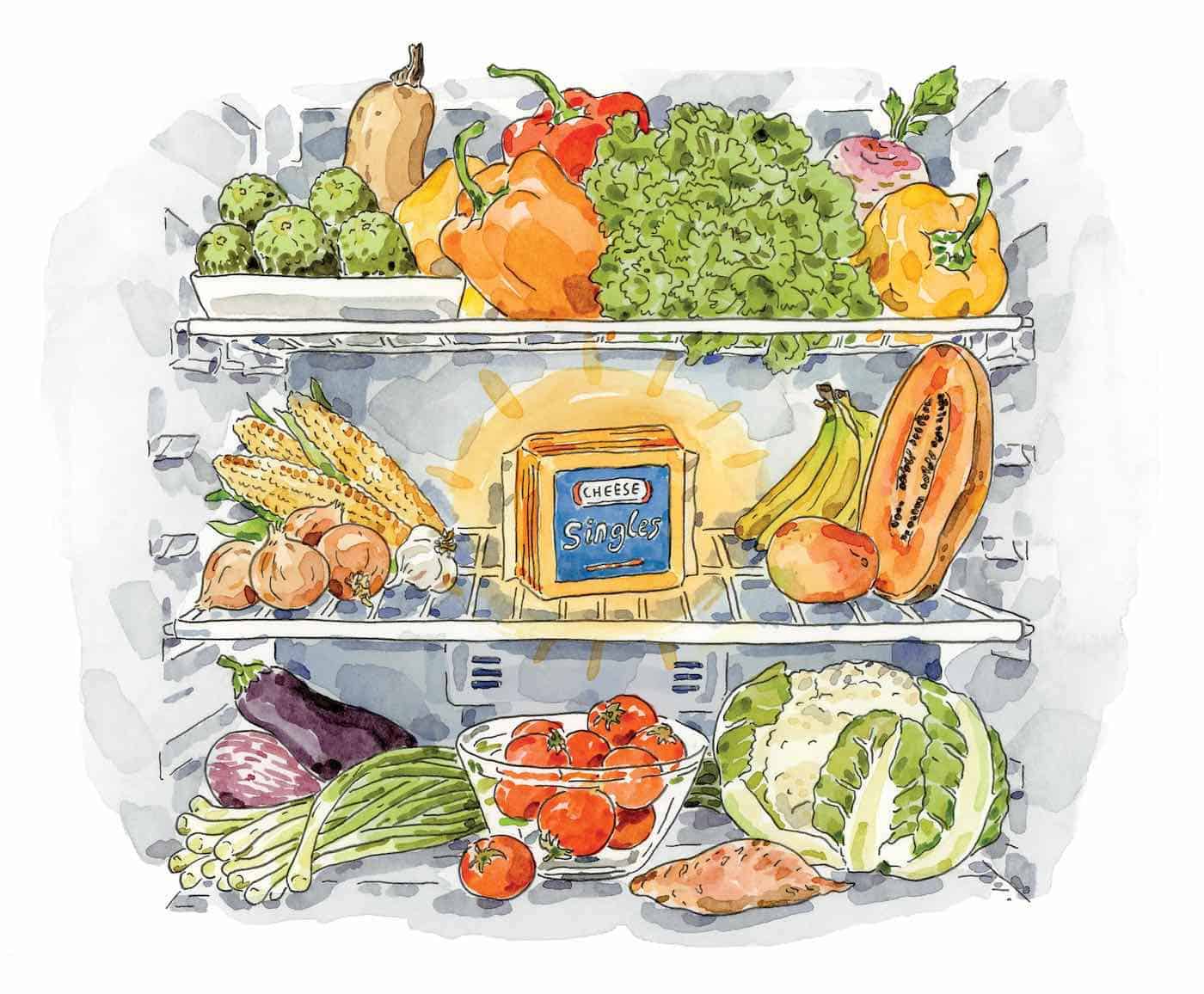
Stealing Slices
When I had a slice of American cheese in my hand, all was right with the world. It was summertime and I had spent the day swimming in a friend’s pool. At the barbecue, each child was handed an individually wrapped cheese slice to place on a hamburger. I had never seen cheese like this before. It was so orange it practically glowed. It was smooth and lacked condensation, even in the hot sun. I ate one slice, and then asked for another, savoring each salty bite, tonguing the gummy stuff on the back of my teeth.
When it was time for my mother to pick me up, I took a third slice to go, nibbling it while sitting on the stoop. When I caught sight of our family van, I shoved the remainder into my mouth and hid the wrapper, already secretive about my newfound discovery.
American cheese was not welcome in my childhood home. Focused on organic food and all-natural ingredients, my parents kept our kitchen free from anything contaminated by chemicals. Since American singles are technically “cheese product” rather than actual cheese, they had no place in our refrigerator.
My mother went to admirable lengths to keep our meals healthful. When my brother and I were babies, she cooked and pureed all of our food by hand from fresh produce purchased at one of the only organic stores in Brooklyn. As children we rarely ate ice cream and enjoyed nary a sip of soda. Even birthday parties had a wholesome slant, featuring grapes and homemade, lightly salted popcorn as snacks.
For a long time my brother and I were all in—we gladly gulped yogurt for dessert and eschewed unfamiliar salty or sweet treats. We were happy with what we knew: fresh, organic, and nutritious food.
However, our mother’s incredible efforts were thwarted once we entered school and began to eat at other homes. Salted butter led to white bread, which led to nitrate-stuffed hot dogs and iced tea mixed from sugary powder. But nothing held my interest the way that American cheese did. And since it was not allowed in our kitchen, I doggedly sought it out in other places.
I savored meals at sleepaway camp and friends’ houses, where I could strip my sandwich of everything but American cheese and bread. I’d grab quarters from our family change bowl and head to the nearby pizzeria while my parents were at work, ordering buttery grilled cheese stuffed with American slices that dripped from the corners. I would trade my nutritious and carefully crafted school lunches with friends whose parents sent them to school with meat-and-cheese sandwiches.
I was a fiend: a youth on the loose, seeking out this chemically enhanced dairy commodity and passing on the block of natural cheddar in our home refrigerator.
Then one day the reins loosened. I don’t know whether my mother was worn down by my incessant appeals or simply tired of explaining, yet again, why “cheese food” was not the same as actual cheese, but Kraft Singles suddenly found a place in the deli drawer. Maybe she realized that my brother and I could push for far worse goodies—ahem, Apple Jacks—and that allowing the fluorescent cheese might soothe our contraband cravings.
So I would come home from high school, grab a few slices, and munch methodically while watching television or hanging out with friends. And yes, those friends would mock me (who eats sliced cheese plain?), but they didn’t know what victory tasted like. It tasted like sodium citrate and calcium phosphate. It tasted like gelatin and annatto. It tasted like cheese product, individually wrapped just for me.
Of course, once I got what I wanted, Kraft slices rapidly lost their appeal. As I got older I returned to appreciating natural cheeses, the stinky and the sharp, the crumbly and the creamy. But even today when I’m served a burger topped with melty American, I’m transported back to a simpler time, when straying from what you were used to was as easy as sitting down at a friend’s kitchen counter.
Featured illustration: Tom Bingham





